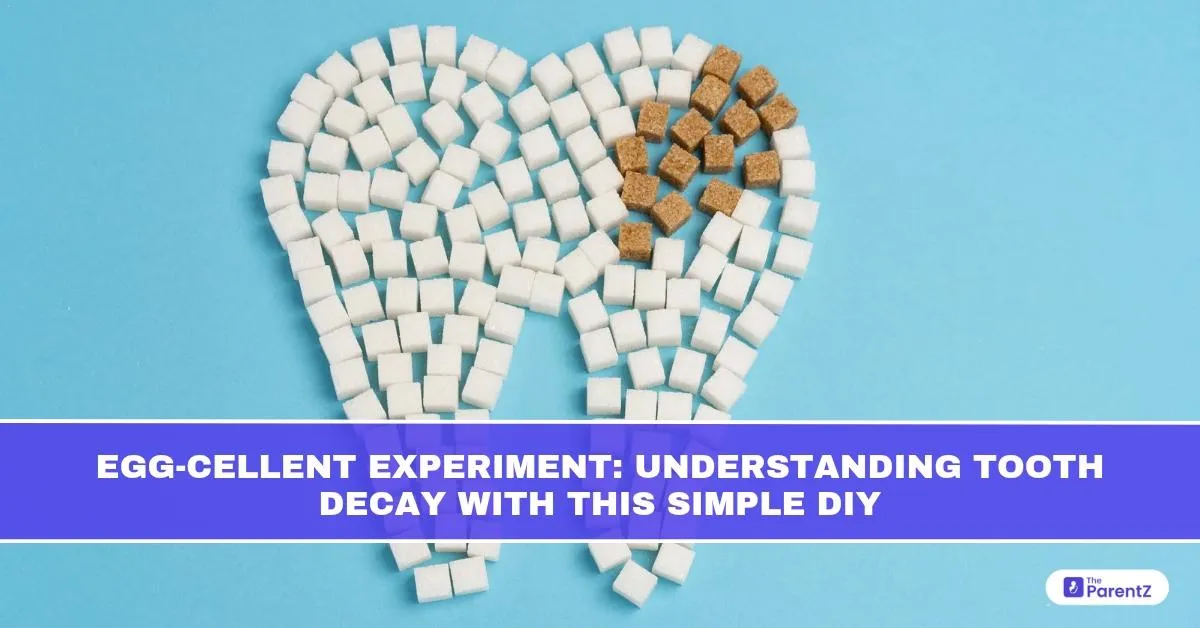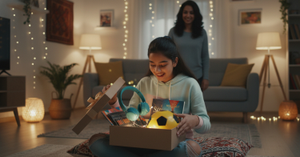“An ounce of prevention is worth a pound of cure.” — Benjamin Franklin
Tooth decay it’s one of those things we hear about often, yet rarely pause to understand truly. We teach our kids to brush their teeth, avoid too many sweets, and visit the dentist, but what if there were a way to see the effects of tooth decay in real time? A simple, heartwarming, and educational experiment that makes the invisible visible?
That’s where the Egg-cellent Experiment comes in, a hands-on DIY project that uses eggs to teach kids about how teeth can decay, and how our daily choices can protect them. It’s an activity that blends science, curiosity, and care, helping children connect the dots between what they eat, how they care for their teeth, and why good dental habits matter.
What Makes This DIY So Special?
The Egg-cellent Experiment is more than just a science project; it's a little story about our teeth, told in a way that kids can see, touch, and remember. Eggs are a perfect stand-in for teeth because their shells are made of calcium carbonate, a material that’s surprisingly similar to the enamel on our teeth. This similarity makes them a wonderful model for what happens when teeth are exposed to acids and sugars, just like in our daily lives.
By soaking eggs in different liquids such as cola, vinegar, juice, or even water, children can see firsthand how acids and sugars affect the eggshells, just as they affect their own teeth. It’s an eye-opening, sometimes shocking discovery, and it’s one that stays with them long after the experiment is over.
Why Understanding Tooth Decay Matters
Tooth decay isn’t just a problem for grown-ups. It starts in childhood, often quietly, when kids munch on sugary treats, sip on fizzy drinks, or forget to brush before bed. Cavities form when acids from food and drink wear down the enamel of the hard, protective layer of the tooth, making it weak and prone to holes.
When children learn how this process works, they begin to see their toothbrush not just as a daily chore, but as a little tool of protection. They start to understand that each time they brush, they’re helping to keep their teeth strong and safe. And when they see the “egg tooth” turning soft or stained, it’s no longer an abstract idea; it’s a vivid reminder that their own teeth need care, too.
A Gentle Dive into Dental Science
As you guide your child through the Egg-cellent Experiment, you can introduce some simple yet powerful ideas about how tooth decay happens:
- Acids in sugary or sour foods can wear down the enamel, making it easier for bacteria to attack.
- Plaque, a sticky film on the teeth holds bacteria that produce acids when they digest leftover food.
- Brushing and flossing help remove plaque, protecting the enamel and keeping teeth strong.
- Fluoride in toothpaste helps repair tiny spots where enamel might start to weaken.
These aren’t just dry facts; they’re pieces of a bigger story: that our bodies are always working to protect us, and that we can help them by making smart choices.
The Heart of the Experiment: Curiosity and Care
What makes the Egg-cellent Experiment truly special is the sense of discovery and wonder it inspires. As your child checks on the eggs each day, gently tapping them, noticing changes in color or texture, or even smelling the liquids, they’re not just learning about science. They’re learning to pay attention. To be curious. To ask questions like, “Why did the cola make the egg dark?” or “Why does the vinegar make bubbles?”
And in those questions, there’s a quiet message: that learning isn’t just about answers. It’s about noticing, exploring, and caring.
The experiment becomes more than just a fun activity; it’s a gentle nudge to think about everyday choices. To consider whether that extra chocolate bar is worth it. To remember why we brush. To see the connection between what we put in our mouths and how we feel, smile, and grow.
A Simple Setup with a Lasting Impact
You don’t need fancy materials or a lab to conduct this experiment; just a few eggs, some liquids like cola, vinegar, orange juice, and water, and a little time. The process is easy:
- Submerge each egg in a separate glass filled with a different liquid.
- Check the eggs daily, noticing how the shells change do they soften, stain, or start to break down?
- Talk about what you see, and connect it back to what happens in our own mouths.
You might find that your child becomes the teacher, explaining to friends or family why brushing is important or how cola can stain teeth. That moment of ownership when knowledge turns into action is a gift that no textbook can give.
A Closing Thought: Every Smile Tells a Story
The Egg-cellent Experiment is a simple project, but its lessons are rich and lasting. It’s a reminder that our bodies are precious, that small choices matter, and that science can be joyful and alive.
As you and your child explore this activity, you’re not just learning about acids, eggshells, and tooth decay; you're also building habits of care, wonder, and attention. These are gifts that will stay with your child for a lifetime, long after the eggs are washed away.
So gather your eggs, your curiosity, and your smiles and get ready for an egg-cellent adventure into the tiny world inside your mouth!








Be the first one to comment on this story.